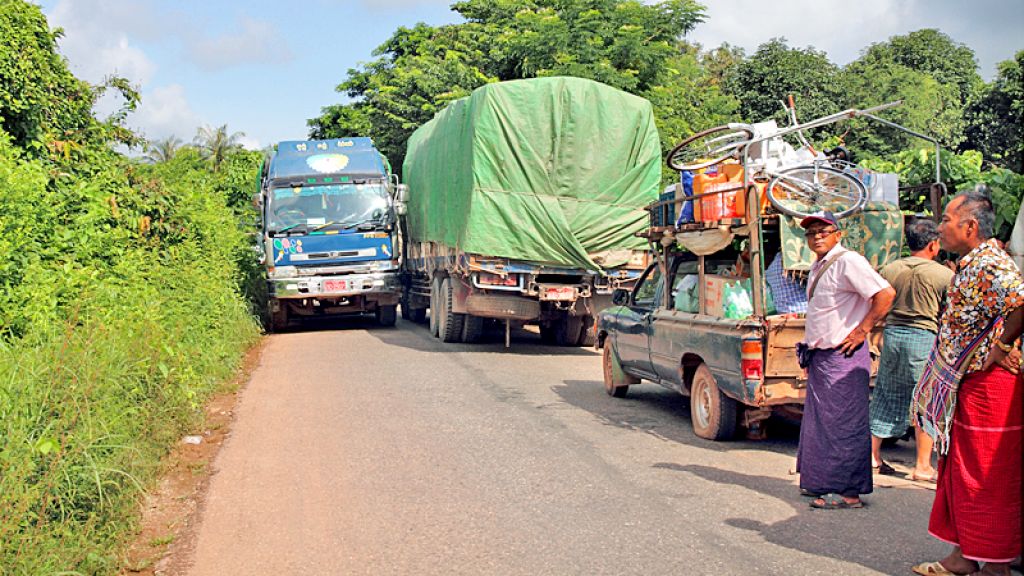
Myanmar’s New Road to Prosperity
A new road forming the last remaining segment of the Greater Mekong Subregion’s East-West Economic Corridor is set to bring new energy to fuel the economic transformation of a vibrant corner of Myanmar.
Myanmar’s Kayin and Mon states, stretching from the bright blue Andaman Sea to the rugged green hills along the country’s southwest border with Thailand, have rich cultural histories and abundant natural resources, but decades of isolation and conflict have left the region economically underdeveloped, with limited social services and antiquated infrastructure.
ADB is now proposing a project that will reconstruct a crucial 70-kilometer stretch of road between Eindu and Kawkareik in Kayin state, the last remaining segment of the Greater Mekong Subregion’s (GMS) East-West Economic Corridor - the only direct and continuous land route across Southeast Asia, stretching from Danang, Viet Nam to the Myanmar coast.
The new road will dramatically improve trade and travel between Myanmar and Thailand, and provide this corner of the country with better economic opportunities.
Sorry state of affiars
The current road between Eindu and the Thai border is a thin strip of pavement barely wide enough to accommodate a single truck. When oncoming vehicles approach traffic grinds to a halt as vehicles seek refuge along the road’s muddy shoulder, slowly inching their way past each other. Some segments of the bumpy, tooth-jarring road are so narrow and in such poor condition that traffic is only one-way, with the direction of traffic alternating every other day.
“Our goods are always delayed. We have to send them up the road one day, down the road the next,” laments U Kyaw Win, a prominent businessman who also serves as honorary treasurer of the Mon State Chamber of Commerce and Industry. “When we can send our goods back and forth every day it will be easy to deal with international business people. When the new road comes, business will boom.”
At present it’s an arduous drive. Slow, bumper-to-bumper traffic crawls along the thin ribbon of pavement winding through the dusty hills. On the outskirts of Kawkareik, family tea shops that double as repair stations provide water hoses for truck drivers to cool off their steaming, over-worked engines and brakes.
U Mya Thaung, an assistant engineer with the Ministry of Construction in Kayin State, concedes the poor condition of roads is strangling trade and commerce.
“The current road is so narrow it’s creating many difficulties. Merchants need their commodities quickly, but right now the flow of commodities is stagnant,” he says. “But I believe that when the new road opens this will largely eliminate these logjams.”
Ripple effect
The revitalized road will also help improve isolated, impoverished communities’ connectivity with larger cities, enhancing prospects for better jobs and economic opportunities.
“The road will increase trade and investment in this region of Myanmar, particularly for people living in rural areas who will enjoy much better access to social services and markets,” says ADB’s Country Director Winfried Wicklein in Myanmar. “Myanmar has enormous potential. With a young population and strategic location - 40% of the world’s population borders to Myanmar - new roads will help Myanmar reconnect with neighboring countries, and serve as a catalyst for economic development.”
To ensure that the new road brings benefits to people living all along the corridor, ADB is also proposing a range of complementary projects in Kayin and Mon states to enhance urban services, support microenterprise development and job creation, develop community infrastructure, and prevent communicable diseases like HIV/AIDS. Communities will be actively involved so they can identify the best means of leveraging the beneficial impacts of the new road.
Until recently the road corridor was a “no-go” area for tourists, but with the lifting of travel restrictions in 2013, the area is preparing to welcome tourists, traders and other visitors that can help give the region a much needed economic lift. Sitting along the banks of the Salween River in Hpa-An, watching boats navigate the still waters in the shadows of old colonial buildings and golden pagodas, it’s easy to imagine the brighter economic future that awaits the region.
U Kyaw Sein Tun, managing director of the Dawn Vigour Construction Company, has been constructing many hotels for entrepreneurs anticipating the coming tourist and business boom. “When the new road is done, many visitors will come,” he says assuredly. “And then we’ll be able to build more hotels and shopping malls, and we’ll create more jobs. I think everyone will benefit from the road.” With better roads, growing tourism, and better trade links with its neighbors, this vibrant corner of Myanmar should be able to continue its remarkable transformation, paving a better future for the region’s people.
Source: ADB.org
